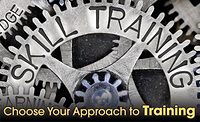Invest Now to Improve Your Future Workforce

Many of the articles you read provide insight regarding immediate actions to take or strategies to implement that will impact your business in the short term. This article is also about acting now, but for an impact on your business, and the restoration industry, that will be seen in the future.
Here in the Midwest we’ve been hearing and reading a lot lately about how our previously manufacturing-based economy continues to evolve and become more technology driven. The segments that are growing typically consist of healthcare (including elder care of all varieties), e-business (including technology/social media/websites), and, more recently, fulfillment centers that ship products purchased online.
I have been involved on a volunteer basis with an initiative in our county—which a recent study reported as “becoming smaller, older, and poorer”—focused on two primary areas: 1) driving business growth in two specific business segments and 2) determining how to better prepare students and those about to enter the workforce with the skills employers are demanding.
It’s this second point that is having a direct impact on our industry, among others, in the wake of our nation’s obsession with the idea that every child must go to college. In my experience, including personal experience with my two sons, college is not the right answer for every child. We have done ourselves a disservice by our lack of focus on the trades, including the essential skills of carpentry, plumbing, welding, electrical work, and associated fields like auto technology. The result is that all of you reading this are struggling to find qualified people and, in all likelihood, this will continue to be the case for the foreseeable future.
So, what can we do about it?
Action has begun here locally on collaboration between employers and the school systems that, I believe, is the right place to start. Many of the employers I interviewed as part of my volunteer work stated: “Kids coming out of high school have no idea about the kinds of jobs we offer, the skills required, or the compensation they can earn and the career opportunities.” The first step to overcoming this lack of knowledge is to provide a forum for local employers to be able to reach children while they are still developing ideas about what they want to do when they grow up. This is happening at the middle school/junior high age when kids are 12-16 years old. Planting the seeds early with both children and their parents can result in more enlightened decisions when choosing an appropriate career path.
Some school systems here are developing essentially three paths or curricula: college prep, trade or technical skills, and military prep. Whether or not you agree that these paths are the right ones, it’s important that parents and children are informed about the options and opportunities that exist. I strongly recommend that you investigate what changes to the curriculum are being implemented in the school systems in your area, be they public, private, or charter schools. I’m not suggesting that you advocate for a restoration curriculum, but rather that you work in concert with those in construction and related service industries to ensure that foundational skills like math and measurement, verbal communication, and use of software and mobile devices are being taught.
It is important to remember that you are not likely to, nor should you limit yourself to, be able to meet your staffing needs by only hiring people who have experience in the restoration and cleaning industries. Your focus should be on the basic skills and characteristics such as work ethic, timeliness, customer focus, and honesty that will make a good employee. You can teach a person with the right aptitude the specific skills and processes that are needed on a day-to-day basis. You cannot as easily train them on how to be honest, care about others, or have a positive attitude.

The next step is to get yourself and your company involved by participating in—or helping to create if they don’t already exist—opportunities to discuss with school-age children the work you do, the type of skills required, and the jobs that are available. It isn’t enough to work with schools to ensure that their students leave with the right basic skills. It’s critical that the future workforce understands what our industry is about, what we do, whom we do it for, and the opportunities that exist for building a career.
Opportunities to get involved come in many forms. Career fairs held by schools or local organizations expose future employees to a broad range of businesses and industries along with the associated career opportunities. Programs where students spend time at a business, perhaps shadowing an employee for a day or so, allow them to see for themselves what the real world is like in a particular industry. Videos of the typical work being done, customer interviews, and speaking one-on-one with owners or employees are other means used to bring previously unknown information to those in the process of evaluating career and educational options.
Regardless of the ways you choose to do so, the important thing is that you invest now to build a workforce that will enable your business to continue to grow and prosper well into the future.
Looking for a reprint of this article?
From high-res PDFs to custom plaques, order your copy today!








